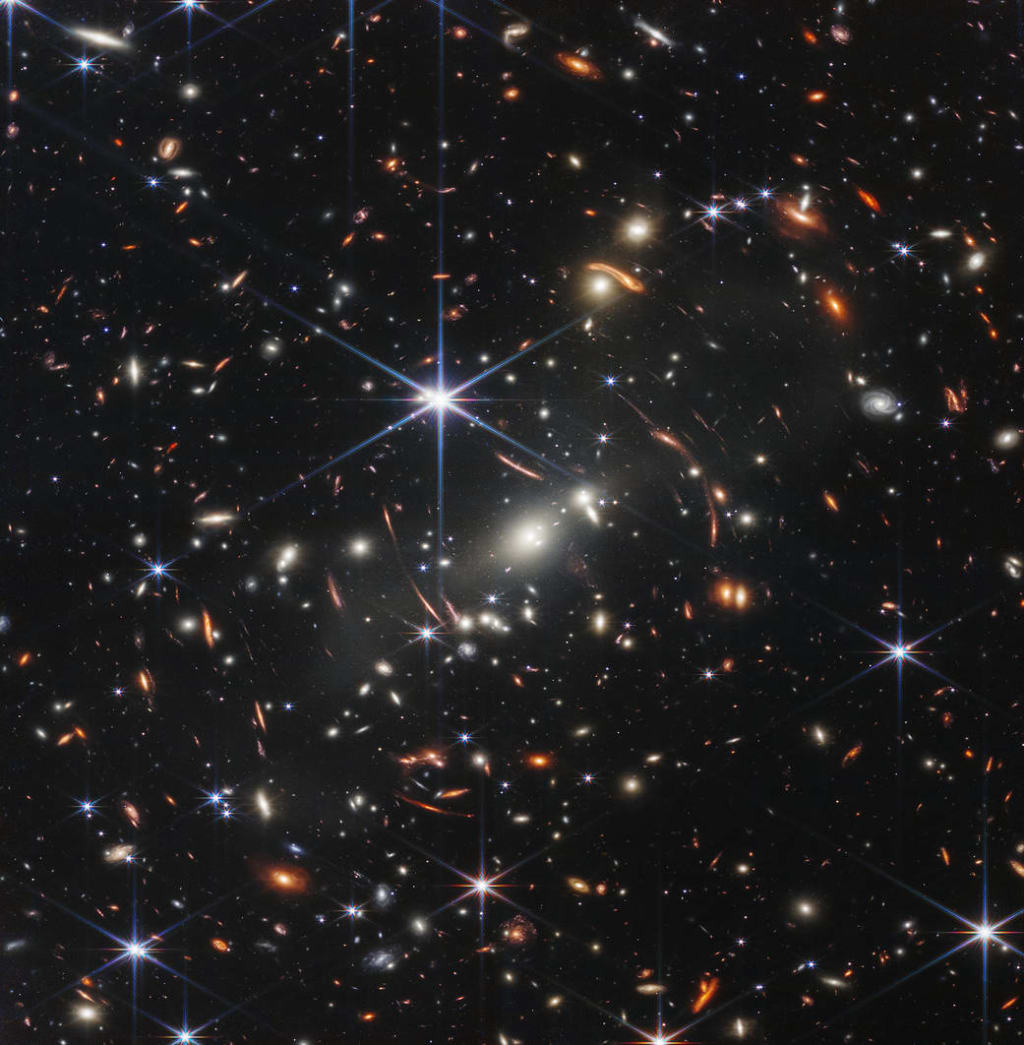What to tell young children about the Webb Telescope
The shocking emptiness of our universe

The James Webb Space Telescope(JWST) is the most powerful space telescope ever built in human history and its first images were released in July 2022.
Stunning pictures of faraway galaxies taken by the JWST have captured people’s attention worldwide, revealing details not known to astronomers before. It is no question that these new findings will reshape the human understanding of the universe.
As a mom with a Ph.D. in Physics, I am eager to share with my 11-year-old daughter the excitement brought by the JWST, but how? The numerical value of the speed of light (order of 300 thousand kilometers per second) is already hard enough for an 11-year-old to grasp, not to mention the concept of space and time.
Still, young minds can easily visualize some essential aspects of our universe. Here is a talking point I suggest to parents who want to inspire their kids with a short talk over the JWST — the emptiness of the universe.
The emptiness of the universe should shock every child. It explains why the JWST is such a valuable tool to astronomers.
Tell your children to picture themselves living in a house as big as the whole Earth. If every member of a family of five simply wanders around in random directions in such a big house every day, they may never see each other during their whole lifetime! One will never experience this kind of physical emptiness on Earth and even picturing it in our heads may already make us feel powerless and lonely.
Like a scarily huge empty house, our universe is extremely sparse. The distance of Neptune from the Sun is about 4,500 million kilometers, which is thousands of millions of our own body size, yet a journey from the Sun to Neptune will provide you an opportunity to meet only 8 planets along the way.
The emptiness of our universe has a huge consequence — any kind of direct interaction, like performing an experiment, is not possible if the object of our study is astronomically distant from the Earth. What can astronomers do then?
Well if we can’t get to them, can they come to us?
For those astronomical object that emits electromagnetic waves, the answer is yes.
The only reasons human ever pay attention to the twinkle twinkle little stars in the night sky is that humans see them every night. Thanks to the emptiness of the universe, visible lights emitted from distant stars are able to travel millions of years in space without being blocked or disturbed before reaching our eyes. In other words, even though the emptiness of the universe has prevented us from physically visiting distant galaxies, at the same time it has ensured lightwaves emitted from those galaxies can safely reach the Earth after traveling an astronomical distance.
Collecting and analyzing lightwaves, or electromagnetic waves more generally, is thus the core of astronomy. JWST is a powerful space telescope designed primarily for infrared astronomy, it can produce images of high resolution and reveal fine details of the universe scientists have not known of.
Imagine reading a secret family letter written by your great-great-grandmother in the attic of your house, it is a thousand times more amazing when you look into a telescope and realize you are looking at an older version of the universe. With JWST, we can look back 13 billion years and understand the universe close to the very beginning when it first existed.
Ready for a journey to outer space with your young children? Hope the info above helps.
The article was originally published on Medium, see this link here.
About the Creator
Stella Yan PhD
PhD in Physics. Residing in the US. Deeply engaged in the exploration of math, science, and personal introspection; truly amazed by the mysteries of the universe and the complexities of the human mind.
Reader insights
Nice work
Very well written. Keep up the good work!
Top insights
Excellent storytelling
Original narrative & well developed characters
Easy to read and follow
Well-structured & engaging content
Expert insights and opinions
Arguments were carefully researched and presented
Eye opening
Niche topic & fresh perspectives
On-point and relevant
Writing reflected the title & theme






Comments (5)
Great article about space. "The only reasons human ever pay attention to the twinkle twinkle little stars in the night sky is that humans see them every night." a very true statement.
An interesting read about space.
This was very informative and I enjoyed reading it! Space has always fascinated me!
Interesting facts about emptiness in space. So much to discover and explore.
I never thought about some of this before. Normally the thought of the emptiness of space scares me because I have anxiety but this was well presented and very informative.